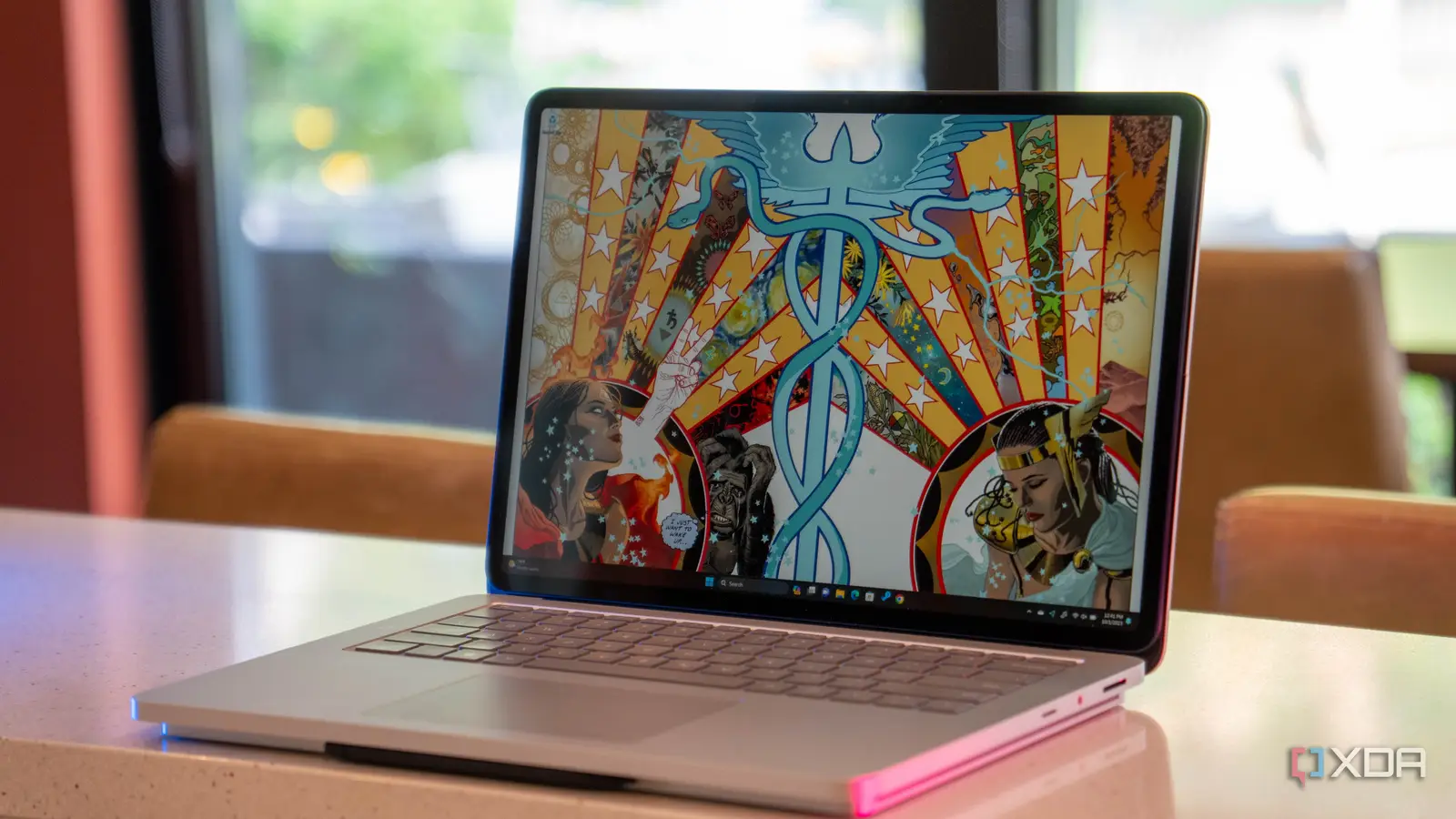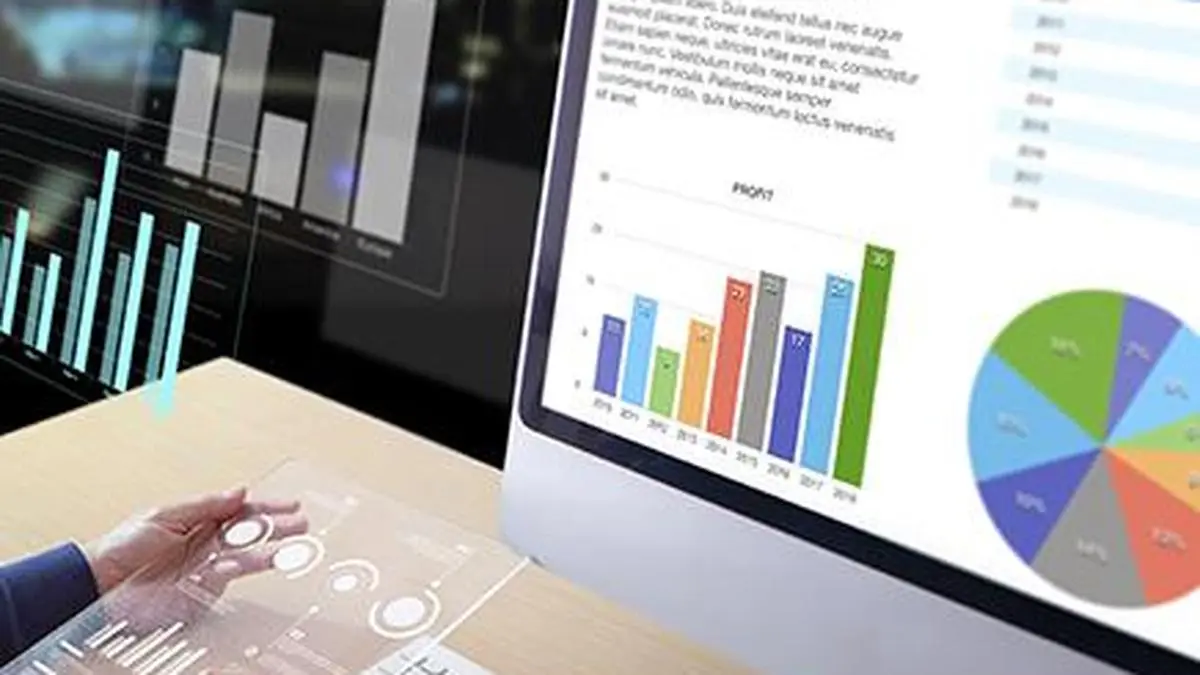Copyright XDA Developers

The world of technology is always evolving and changing, and that means the path to where we are today is also littered with the remnants of services, products, and projects that were simply gone too soon. There's frankly no shortage of things worth remembering due to them deserving better than what they got. But today we're going to go through some of the things you might have hidden away in the back of your brain, and remind you of just how much we've lost throughout the years. Plan 9 A whole new operating system Before desktop operating systems were as solidly established as they are today, Plan 9 was a project that set to evolve the UNIX platform in a few key ways. It greatly expanded on the "everything is a file" idea that UNIX was known for, adopting a similar approach for networking, while also shifting the focus of the user experience to a GUI rather than relying entirely on a terminal interface. Plan 9 also included other state-of-the-art features, like capability-based security, and a file system called Fossil, which supported logging and thus, made it easy to create snapshots of a drive and keep a history of file versions. Unfortunately, it never seemed to gain much traction, possibly because around the time of its release, Windows was starting to become too big, and Linux was a more widely supported alternative. However, many of these concepts are still big today, and Plan 9 was obviously ahead of its time in some regards. For example, modern file systems like Btrfs and ZFS have snapshotting capabilities as one of their primary benefits. There's even a fan project that carries the legacy of Plan 9 called 9front. Ask Jeeves The answer to all your questions These days, any question that pops into your head will likely be answered by ChatGPT or a simple Google search. But before the AI craze we're currently experiencing, and even before Google was as big a search engine as it's become, there was another way to get the answers to any question you had: Ask Jeeves. Ask Jeeves is admittedly from before my time on the internet, but it was a simple website where you'd type in a question and get an answer. It was essentially a search engine, but presented in a more human way, as if you had your own personal butler ready to help you at any time. Ask Jeeves couldn't stand up to the competition brought on by Google in the early 2000s, though, despite attempts at modernizing the platform. Technically, the service lives on in Ask.com, but it's a very basic search engine with a homepage dedicated to news articles. Jeeves no longer exists, which is unfortunate now that we're in the era of AI chatbots providing answers for us. Ask Jeeves would have fit right into today's web. Google Hangouts It deserved so much better I'll admit that we have no shortage of services today that do what Google Hangouts did back in the day, but its death will never stop being a sad one to me. While modern-day technology has caught on, I remember a few years after 2013 when, if I wanted to watch a YouTube video over the internet with someone else, Hangouts was the way to do it. I couldn't find any other method for a while, and for the most part, it worked really well at the time. And that's not all Hangouts was for. It was a solid video communication tool, with chat, voice, video, and screen sharing, which was a set of features not easily found in an app that did so reliably, especially when you add the ability to watch YouTube videos together. Later on, Hangouts even got a feature called Hangouts on Air, where you could stream a Hangouts session on YouTube, offering a relatively simple way to create a podcast or otherwise share a conversation with the world. While you can use things like Discord to watch YouTube in a group now, Google's integration still had some benefits that you can't get anywhere else. But Google repeatedly fumbled its messaging apps and kept restarting its efforts until there was nothing left. And don't you worry, this entire article could be based on the Google graveyard, and we'll have more examples to come. PlayStation handheld consoles How far we've come Nintendo has always been the undisputed king of handheld gaming, but for a while, competition did exist. Sega tried to get a slice of the pie with systems like the Sega Game Gear and Nomad, Atari had the Lynx, and even companies like Nokia thought they could break into the market with the N-Gage. But Sony's PlayStation brand was the only one to truly pose a challenge here, with the original PlayStation Portable selling just over 80 million units. But the second generation of PlayStation handhelds — the Vita — came at the worst time for handheld gaming. The advent of smartphones and tablets seemed to threaten the entire industry, and while Nintendo managed to scrape by with the 3DS, the PlayStation Vita sold a measly 17 million units worldwide — arguably the only example of a console failure for Sony. This was enough to scare Sony away from the handheld market, but the following years would prove that dedicated handheld gaming was far from dead, with the Nintendo Switch going on to become the third-best-selling console of all time (at the time of writing this). This has spurred a wave of PC-based handheld gaming devices, and even Sony has kind of embraced portable gaming with the PlayStation Portal. But it's not a standalone console, and it's not clear if we'll ever get one again. But it would make a lot of sense. Windows Phone A thousand cuts Microsoft had already established itself as the king of desktop operating systems by the early 2000s, and entering the mobile space was a no-brainer. Apparently, Microsoft took that expression to heart, because what followed in the decade and a half after the introduction of Windows Mobile was a series of baffling decisions that drove the platform into the ground despite a very loyal fanbase. The initial versions of Windows Mobile were very business-focused and not great experiences for a typical phone. The operating system was also somewhat clunky and slow, which, by the time the iPhone came around, wasn't really up to snuff. Microsoft rebooted the platform with Windows Phone 7 in 2010, giving it a huge makeover that made it more user-friendly thanks to a simple, clean UI inspired by the Zune music player. It didn't take long for things to derail, though. In 2012, Microsoft introduced Windows Phone 8, and not only were Windows Phone 7 devices not able to upgrade, any apps developed for either of the two versions would not be compatible with the other. And in 2015, when Windows 10 Mobile was announced, Microsoft promised an upgrade path for every Windows Phone 8.1 device, but by the time 2016 rolled around, the vast majority of phones were lost in the transition, with only a handful receiving the upgrade. Already starting as something of an underdog in the mobile space, the successive mistakes Microsoft made with Windows Phone in the early 2010s doomed the platform to guaranteed failure in what's likely the biggest market in consumer tech. Google Duplex on the Web Making your life easier Duplex remains one of the cooler projects to come out of Google in recent years. It started on the phone with a feature that allowed a voice assistant to interact with others on voice calls on your behalf — making reservations at restaurants, filtering potential spam calls, and so on. I didn't know about this until researching this article, but Duplex actually came to the web for a while, offering a similar set of features. Duplex would be implemented in certain websites to allow Google to make reservations or purchases for you, saving you the hassle of jumping through whatever hoops a website might have. Google Duplex on the Web was shut down in 2022, but fast forward to 2025, and we've been hearing a lot about agentic AI and the ability for tools like Gemini and Copilot to interact with web content on the user's behalf to make things easier. Google Duplex on the Web was an early, more tailored version of this idea, and it would have made sense to continue that development into the current era. Vine How did this even happen? For a very short time, Vine seemed to be taking over the world in terms of popularity, inundating the web with very short-form video that quickly gained traction. If that sounds a lot like what TikTok is today, that's because it is, and that makes it all the more baffling that Vine was killed off when it was. Founded in 2012, Vine was acquired by Twitter soon after, and it lived for a good while. But in 2017, the service was shut down altogether for apparently no reason, shortly after TikTok had launched, leaving the path wide open for that platform to take over the internet. Considering it had such a massive headstart, keeping Vine open could have radically changed the landscape of today's video content, but Twitter decided to throw that away just as this kind of content exploded. That's not the only mistake of this kind that Twitter made, either. Periscope was another service Twitter shut down despite the ever-growing popularity of live streaming. Though at least Periscope's core features were built into Twitter. Surface (Laptop) Studio One of Microsoft's coolest form factors Much like Google, Microsoft has no shortage of cool products that met their demise far too early, and the Surface Studio line is yet another victim of the company's more conservative approach in recent years. All-in-one desktops were far from a new thing when the Surface Studio made its debut in 2016, but the unique design philosophy, best explained by then Surface leader Panos Panay, really made this something unique. The Surface Studio featured a large, gorgeous touchscreen, an ultra minimalistic design that was meant to fade into the background, and it could be brought down onto your desk so you could use it for all your artistic expression. There was even a Surface Dial accessory, allowing you to more easily select tools or colors in creative apps. But after the Surface Studio 2, it took four years for another upgrade, and it was an incredibly underwhelming release with a ridiculous price tag of $4,500. Similarly, the company introduced the Surface Laptop Studio in 2021, and that got upgraded in 2023, just as Panos Panay left Microsoft. While it's technically possible these devices would receive new iterations, the current Surface leadership seems to have no interest in venturing outside its best-selling products. Project Ara Modular phones? It could have happened Back in 2013, when smartphones were still fun and exciting, Google announced Project Ara. This was a concept for a completely modular phone that would allow you to swap components as needed over time. Almost everything, including the SoC, battery, displays, and more would be swappable, even including the ability to remove some components altogether, so you could, for example sacrifice a camera for a bigger battery. The idea was certainly interesting, but the concept as it was initially presented was not feasible, and in later stages, Ara was set to be a phone with a few non-upgradable components and some parts that could still be swapped around as needed. Unfortunately, the project was shelved entirely in 2016, and a proper modular phone never came to be, but we've seen some attempts to revive this idea since then. Fairphone, a Dutch company, has been making partly modular phones with easily replaceable parts for a few years now (albeit it's more meant for repairs than upgrades), and Framework brought that kind of idea to laptops, with all models offering full upgradeability since the initial release in 2021. If kept alive, Project Ara could have completely redefined how we think about phones today, but alas, we live in the wrong timeline. Microsoft Band It was just kind of cool Fitness trackers weren't exactly new back in 2014, but their popularity has only increased as time has gone on. Which makes it all the stranger that Microsoft gave up on the Microsoft Band family so quickly. Consisting of just two products, Microsoft Band offered a pretty interesting experience that was more akin to a wristband than a typical timepiece, giving it a bit of a unique look. The original model was pretty unimpressive, but the Microsoft Band 2 really refined and polished the design into something that looked truly cool, and the clean UI was a perfect pairing for Windows Phone. Unfortunately, the Microsoft Band 2 was the last we saw of the platform, launching just one year after the original, Microsoft gave up very quickly and failed to capitalize on the growth of the digital health market that would be coming in the decade to follow. It's a real shame. We've lost too much It's a bit disheartening to look at the landscape of technology today and realize how much has gotten worse or simply more boring without some of the things we lost along the way. While I don't have a personal attachment to all the products above, things like Projects Ara, the Surface Studio family, and Windows Phone are things I genuinely wish I could have seen more of. And this is a short list in the grand scheme of things — you can probably mention a lot more lost tech in the comments.



